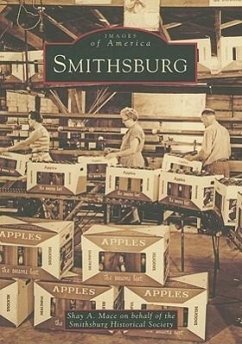The town of Smithsburg was founded in 1813 by Christopher Smith when he purchased part of Shadrackas Lot. During the Civil War, Smithsburg acted as a hospital town, treating wounded soldiers from the neighboring battles of South Mountain and Antietam. On July 5, 1863, Confederate general J. E. B. Stuart and Union general Hugh Judson Kilpatrick exchanged artillery fire over Smithsburg. By 1873, the Western Maryland Railroad, which connected Baltimore and Hagerstown, brought new prosperity to the area. By the 1930s, Smithsburg had benefited from an economic boom, becoming the center for banking and trade for the fruit growers of the surrounding region. Today the physical layout of the town remains virtually unchanged, even as the communityas population grows. Both large and small businesses flourish due to Smithsburgas proximity to Hagerstown and larger metropolitan areas such as Baltimore and Washington, D.C.
Hinweis: Dieser Artikel kann nur an eine deutsche Lieferadresse ausgeliefert werden.
Hinweis: Dieser Artikel kann nur an eine deutsche Lieferadresse ausgeliefert werden.








